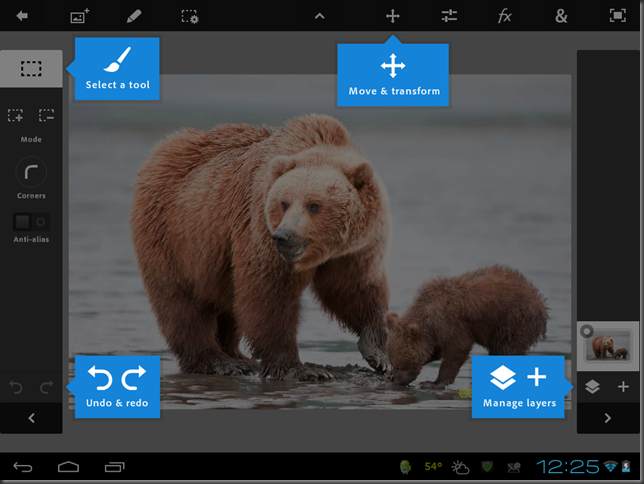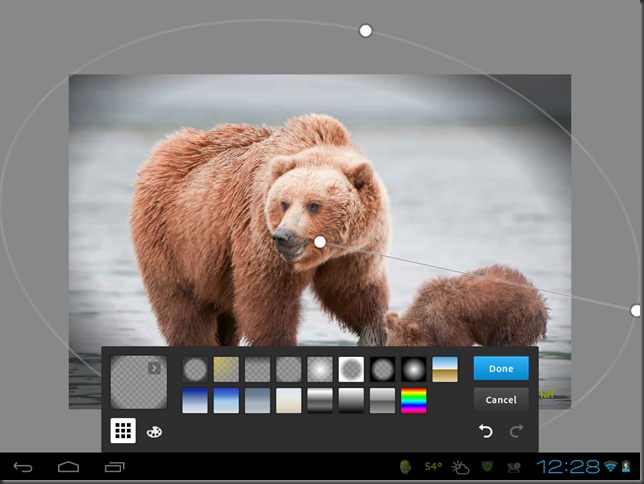- Photo Safaris
- Alaska Bears & Puffins World's best Alaskan Coastal Brown Bear photo experience. Small group size, idyllic location, deluxe lodging, and Puffins!
- Participant Guestbook & Testimonials Candid Feedback from our participants over the years from our photo safaris, tours and workshops. We don't think there is any better way to evaluate a possible trip or workshop than to find out what others thought.
- Custom Photo Tours, Safaris and Personal Instruction Over the years we've found that many of our clients & friends want to participate in one of our trips but the dates we've scheduled just don't work for them or they'd like a customized trip for their family or friends.
- Myanmar (Burma) Photo Tour Myanmar (Burma) Photo Tour December 2017 -- with Angkor Wat option
- Reviews Go hands-on
- Camera Reviews Hands-on with our favorite cameras
- Lens reviews Lenses tested
- Photo Accessories Reviews Reviews of useful Photo and Camera Accessories of interest to our readers
- Useful Tools & Gadgets Handy tools and gadgets we've found useful or essential in our work and want to share with you.
- What's In My Camera Bag The gear David Cardinal shoots with in the field and recommends, including bags and tools, and why
- Articles About photography
- Getting Started Some photography basics
- Travel photography lesson 1: Learning your camera Top skills you should learn before heading off on a trip
- Choosing a Colorspace Picking the right colorspace is essential for a proper workflow. We walk you through your options.
- Understanding Dynamic Range Understanding Dynamic Range
- Landscape Photography Tips from Yosemite Landscape Photography, It's All About Contrast
- Introduction to Shooting Raw Introduction to Raw Files and Raw Conversion by Dave Ryan
- Using Curves by Mike Russell Using Curves
- Copyright Registration Made Easy Copyright Registration Made Easy
- Guide to Image Resizing A Photographers' Guide to Image Resizing
- CCD Cleaning by Moose Peterson CCD Cleaning by Moose Peterson
- Profiling Your Printer Profiling Your Printer
- White Balance by Moose Peterson White Balance -- Are You RGB Savvy by Moose Peterson
- Photo Tips and Techniques Quick tips and pro tricks and techniques to rapidly improve your photography
- News Photo industry and related news and reviews from around the Internet, including from dpreview and CNET
- Getting Started Some photography basics
- Resources On the web
- My Camera Bag--What I Shoot With and Why The photo gear, travel equipment, clothing, bags and accessories that I shoot with and use and why.
- Datacolor Experts Blog Color gurus, including our own David Cardinal
- Amazon Affiliate Purchases made through this link help support our site and cost you absolutely nothing. Give it a try!
- Forums User to user
- Think Tank Photo Bags Intelligently designed photo bags that I love & rely on!
- Rent Lenses & Cameras Borrowlenses does a great job of providing timely services at a great price.
- Travel Insurance With the high cost of trips and possibility of medical issues abroad trip insurance is a must for peace of mind for overseas trips in particular.
- Moose Peterson's Site There isn't much that Moose doesn't know about nature and wildlife photography. You can't learn from anyone better.
- Journeys Unforgettable Africa Journeys Unforgettable -- Awesome African safari organizers. Let them know we sent you!
- Agoda International discounted hotel booking through Agoda
- Cardinal Photo Products on Zazzle A fun selection of great gift products made from a few of our favorite images.
- David Tobie's Gallery Innovative & creative art from the guy who knows more about color than nearly anyone else
- Galleries Our favorite images
Photoshop Touch: Android finally gets some Adobe love
Photoshop Touch: Android finally gets some Adobe love
Submitted by David Cardinal on Mon, 01/23/2012 - 12:44
 As a loyal Android user (my wife has the iPad & iPhone in the family) I’ve been moping over the last year as one hot app for photographers after another came out for the “i*” products, and Android was left behind. Best sellers like Instagram, Snapseed, and even Adobe’s original tablet applications for use with Photoshop, were and are still only available on Apple devices.
As a loyal Android user (my wife has the iPad & iPhone in the family) I’ve been moping over the last year as one hot app for photographers after another came out for the “i*” products, and Android was left behind. Best sellers like Instagram, Snapseed, and even Adobe’s original tablet applications for use with Photoshop, were and are still only available on Apple devices.
Fortunately, Adobe has started to change all that, with a line of tablet applications for Android. Without a doubt the flagship is Photoshop Touch. Essentially a mini-version of Photoshop, it comes complete with layers, filters, gradients, blending modes, text, and special effects. More importantly, unlike many early tablet programs, it is actually really easy to learn and use. After a compelling demo from Marissa and Allison from Adobe at a press event at CES, I was extra-motivated to get it running on one of my tablets – Touch requires Android 3.1 or greater, so it won’t run on many earlier Honeycomb tablets, or any Gingerbread tablets. In my case that meant finding a custom Ice Cream Sandwich (Android 4.0) ROM I could run.
Once I got Touch fired up, it was almost as easy to figure out as it was to watch the demo (which is saying something – since often even products with great demos are hard to learn on your own), and even more fun to play with. For anyone familiar with Photoshop, it’s really a no-brainer to find the clearly laid out layers and tools menus and familiar concepts like Adjustments, Blending, Opacity, and Filters all work just like they do in the “big” Photoshop.
After my initial euphoria, I settled down to the more mundane task of deciding how I would actually use this new tool. Unfortunately, that’s when some of the limitations and rough edges surfaced. First and foremost, Touch can only work with images up to 1600 x 1600 pixels, so it is only useful for web and mobile images. If you want to capture images at a higher resolution, you’ll need to work on a separate copy in Touch and then repeat your work later. Touch also doesn’t work with Raw files. Since tablets don’t actually allow you to capture Raw images, that’s not a problem at first blush, but if you want to use your tablet connected to a camera (either tethered, or sharing a hard drive, or using an Eye-Fi card) then you’re likely to have Raw images you want to process.
There is one other wrinkle, at least for now. Tablets don’t make great cameras. Most mobile photos are still taken with phones or small point and shoots. So having an editor on your tablet is fun, and possibly a convenience, but you still need to get the image onto the tablet – and resized to less than 1600 pixels – before Touch can come into play. Adobe starts to address this by integrating their Creative Cloud into the software, so you can make your images accessible from any device – if you are willing to buy into their Cloud subscription.
Other sharing options include sending the image to your Facebook account or through email. You can of course save the images locally, but at quite a low quality. Since Touch won’t handle large images, it is also frustrating that it can’t directly edit the images captured by most cameras – including the one in your tablet – unless you set them to a very low resolution.
Touch is great fun, and a definite leading edge for great tablet applications to come, but until the tablet ecosystem allows better handling of larger images – including better support for large flash memory cards and disks – as well as raw images, and seamless camera transfer, Photoshop Touch is likely to get filed away in the “social media” corner of creative tool options. It is fun and remarkably powerful, so I look forward to the day I can use it to process my Raw files in the field without setting up a laptop – after all, the keyboard is probably the least essential part of Photoshop if you have a quickly accessible touch interface.
Hats off to Adobe for an amazingly clever application. I’m looking forward to reviewing and comparing it with the Android version of nik’s SnapSeed when it is available, as it has gotten rave reviews on the iPad.
- Log in to post comments



